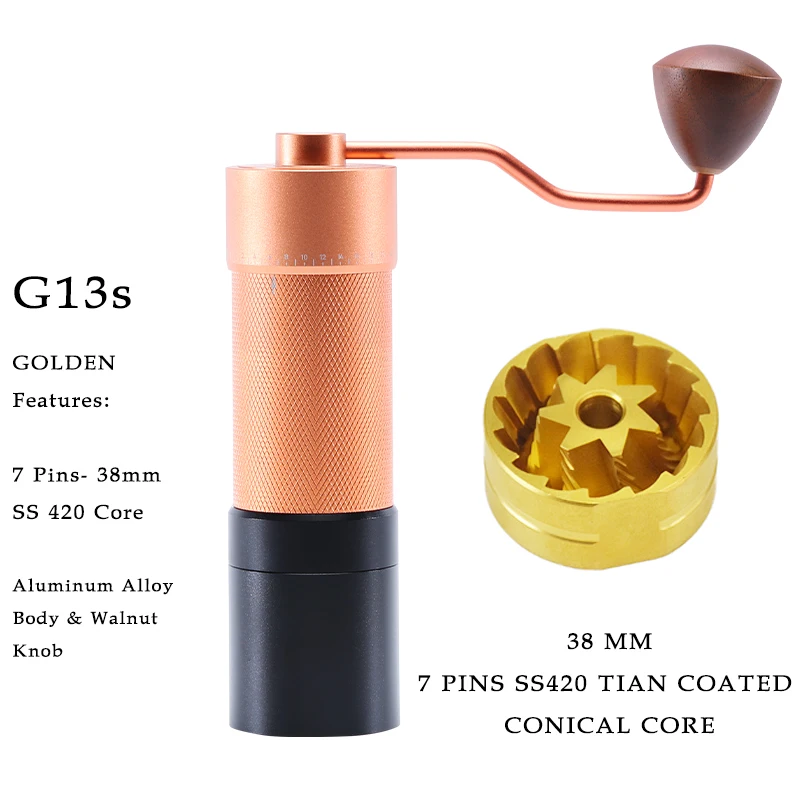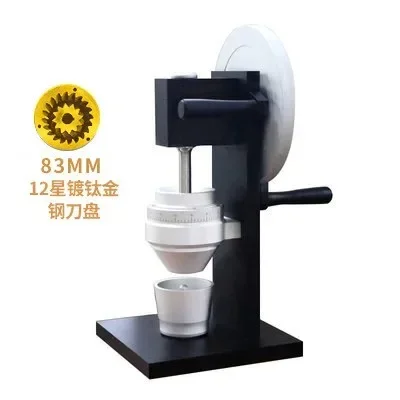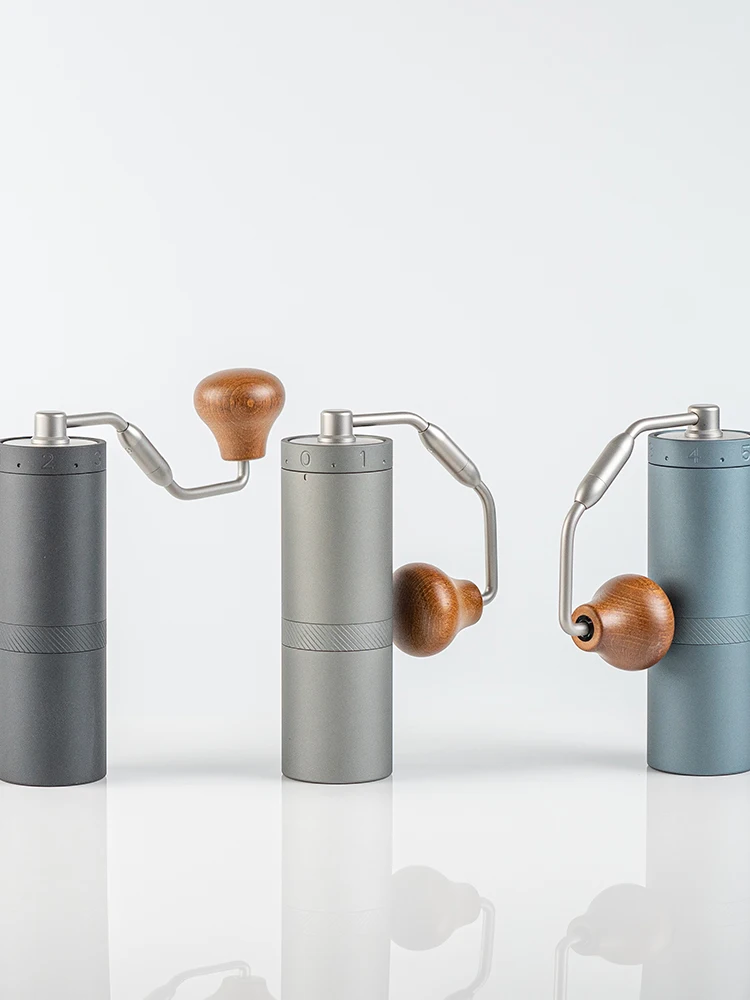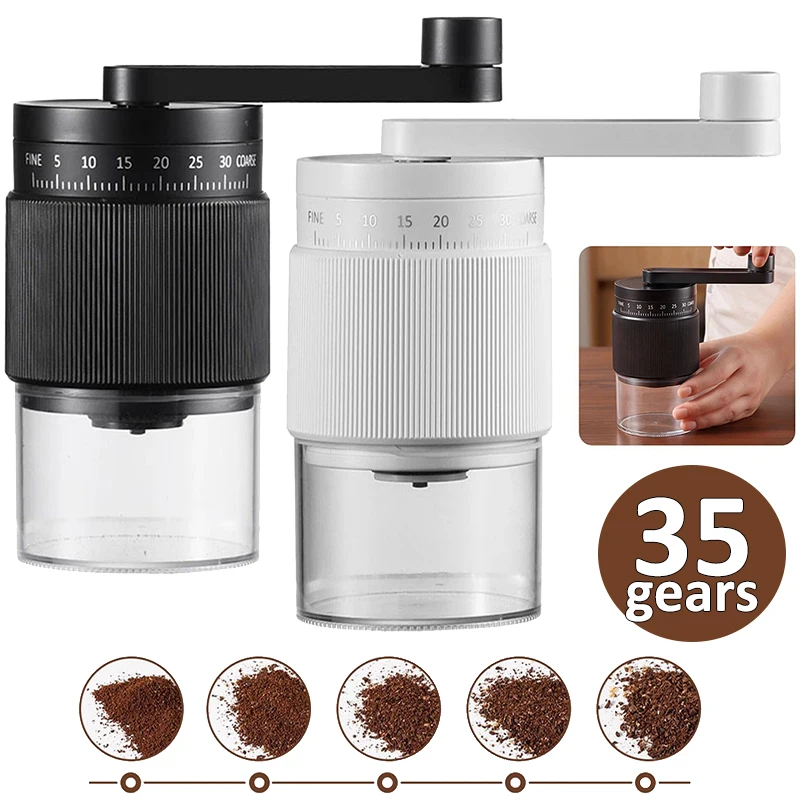Creating the perfect espresso shot is both an art and a science, with grind texture playing a crucial role in the final result. Whether you’re new to home espresso or looking to refine your technique, understanding the ideal grind texture can transform your coffee experience. Let’s explore the world of espresso grind texture and discover how to achieve that perfect, balanced shot.
Understanding the Ideal Espresso Grind: Visual and Tactile Characteristics
The perfect espresso grind has specific characteristics that can be identified both visually and through touch. Getting this texture right is fundamental to brewing exceptional espresso.
An ideal espresso grind resembles fine salt or powdered sugar in appearance—significantly finer than table salt but not as fine as flour. When you’re aiming for the perfect texture, look for these key characteristics:
- Particle size: Typically in the 200-400 micron range (about the texture of fine beach sand)
- Visual appearance: Uniform in color with slight clumping tendencies
- Touch test: When pinched between fingers, the grounds should clump slightly but still break apart easily
- Cohesion: Should form small clumps that don’t immediately fall apart, indicating the right moisture content and particle size
The “pinch test” is particularly useful for beginners. Take a small amount of ground coffee and pinch it between your thumb and forefinger. The grounds should stick together slightly when compressed but break apart with minimal pressure. If they don’t stick at all, your grind is likely too coarse. If they clump together firmly like wet sand, your grind is probably too fine.
Understanding precision grind settings for espresso is essential for achieving consistency in your shots. The difference between a perfect extraction and a disappointing one can be just a tiny adjustment in your grinder settings.
When assessing your grind texture, it’s helpful to have a visual reference for different espresso grind textures to compare against. This can help you identify if your grounds are in the right range or need adjustment.
Most precision manual grinders are designed to achieve this specific texture, allowing for the fine adjustments needed for espresso preparation.
The Science of Extraction: Why Grind Texture Matters
Understanding the science behind extraction helps explain why grind texture is so critical to espresso quality.
Surface Area Dynamics
The finer you grind coffee, the more surface area is exposed to water. This increased surface area allows for more efficient extraction of flavors, oils, and compounds from the coffee. For espresso, which has a very short contact time between water and coffee (typically 25-30 seconds), the fine grind creates enough surface area for proper extraction despite this brief encounter.
Pressure and Resistance Relationship
Espresso machines operate at approximately 9 bars of pressure. The coffee bed needs to provide adequate resistance to this pressure for proper extraction. If the grind is too coarse, water rushes through too quickly without extracting enough flavor. If too fine, the bed becomes impenetrable, causing over-extraction or machine choking.
Water Contact Time
The grind texture directly controls how quickly water passes through the coffee puck. This governs extraction time, which significantly impacts flavor. The relationship between grind size and espresso extraction is one of the most important variables to master.
Uniformity and Balanced Extraction
Uniform particle size ensures that all coffee grounds extract at roughly the same rate. Non-uniform grounds lead to some particles over-extracting (producing bitterness) while others under-extract (contributing sourness), resulting in an unbalanced flavor profile.
The science of extraction explains why a seemingly minor adjustment to grind size can dramatically alter your espresso’s taste, body, crema quality, and overall sensory experience.
Recognizing and Fixing Under-Extraction: When Your Grind is Too Coarse
Under-extraction occurs when your grind is too coarse, leading to a host of undesirable characteristics in your espresso. Being able to identify and correct this problem is essential for improving your espresso.
| Characteristic | Under-extracted (Too Coarse) | Properly Extracted |
|---|---|---|
| Visual Appearance | Granular, like fine sand | Fine powder with slight clumping |
| Shot Flow | Fast, watery stream | Steady, honey-like flow |
| Extraction Time | Under 20 seconds | 25-30 seconds |
| Crema | Thin, pale, disappears quickly | Golden-brown, persistent |
| Taste | Sour, acidic, weak, watery | Balanced, sweet, rich |
When your espresso runs too quickly (under 20 seconds) and tastes distinctly sour or lacks body, your grind is likely too coarse. The water rushes through the coffee bed without extracting enough of the desirable compounds, leaving you with an unbalanced, underwhelming shot.
To fix under-extraction, adjust your grinder to a finer setting in small increments. Make one adjustment at a time, then pull another shot to assess the change. Continue this process until you reach the target extraction time of 25-30 seconds for a double shot.

Understanding espresso shot timing and grind adjustments is crucial for diagnosing and fixing under-extraction issues. Many home baristas mistakenly believe that applying more tamping pressure can compensate for a too-coarse grind, but this rarely solves the fundamental problem.
Using grinders with fine adjustment capability makes it much easier to make the small incremental changes needed to correct under-extraction problems and achieve the perfect espresso texture.
Identifying and Resolving Over-Extraction: When Your Grind is Too Fine
At the opposite end of the extraction spectrum, over-extraction occurs when your grind is excessively fine. This creates its own set of problems that can ruin an otherwise promising espresso shot.
| Characteristic | Over-extracted (Too Fine) | Properly Extracted |
|---|---|---|
| Visual Appearance | Powdery, flour-like, clumpy | Fine powder with slight clumping |
| Shot Flow | Very slow, dripping, or none at all | Steady, honey-like flow |
| Extraction Time | Over 35-40 seconds or machine chokes | 25-30 seconds |
| Crema | Dark, spotty, or excessively thick | Golden-brown, persistent |
| Taste | Bitter, harsh, astringent, burnt | Balanced, sweet, rich |
When your espresso machine struggles to push water through the coffee puck or the extraction time exceeds 35 seconds, your grind is likely too fine. The resulting espresso often tastes bitter, harsh, and unpleasantly astringent due to the over-extraction of compounds that should remain in the coffee grounds.
To correct over-extraction, adjust your grinder to a slightly coarser setting. Again, make small, incremental adjustments and test after each change. Finding the right espresso grind settings often requires patience and methodical testing.
A common misconception is that “finer is better” for espresso. While espresso does require a fine grind, going too far results in diminishing returns and eventually produces poor results. The goal is to find the sweet spot where extraction is balanced and flavor is optimal.
Burr Grinders: The Essential Tool for Espresso Precision
Not all coffee grinders are created equal, and when it comes to espresso, the type of grinder you use matters tremendously. Burr grinders are considered essential equipment for anyone serious about espresso quality.
Blade grinders, which use a propeller-like blade to chop coffee beans, produce inconsistent particle sizes ranging from powder to large chunks. This inconsistency makes it impossible to achieve a balanced extraction, as some particles will over-extract while others under-extract simultaneously.
Burr grinders, in contrast, crush beans between two burrs (grinding surfaces), creating uniform particles that extract evenly. Key advantages include:
- Consistency: Produces uniform particle size for even extraction
- Precision: Allows for minute adjustments to dial in the perfect grind size
- Heat reduction: Generates less heat during grinding, preserving coffee flavors
- Durability: Quality burr sets maintain consistency over time
Understanding why burr grinders are essential for espresso can help you make an informed decision when selecting equipment. The difference in cup quality between blade and burr grinders is immediately noticeable, especially for espresso preparation.
For home espresso enthusiasts, investing in quality manual coffee burr grinders offers an excellent balance of precision and value. These grinders provide the control needed for espresso without the high cost of premium electric models.
Mastering the Dialing In Process: Finding Your Perfect Grind Setting
“Dialing in” refers to the methodical process of finding the optimal grind setting for your specific coffee beans and espresso machine. This process is crucial because even the finest grinder won’t produce great espresso without proper adjustment.
Follow this step-by-step approach to find your perfect grind setting:
- Start with a baseline setting – Begin at the finer end of your grinder’s espresso range
- Pull a shot and time it – Aim for 25-30 seconds for a 2-ounce double shot
- Assess the flow – Look for a honey-like consistency, often described as a “mouse tail”
- Taste the espresso – Evaluate balance, sweetness, acidity, and bitterness
- Make one adjustment at a time – If too fast/sour, go finer; if too slow/bitter, go coarser
- Repeat the process – Continue making small adjustments until you achieve the desired result
- Document your setting – Note the successful setting for future reference

Finding the correct grind setting for espresso often requires patience and methodical testing. Remember that proper extraction typically produces a balanced flavor that is neither overwhelmingly sour nor bitter, with a pleasant sweetness and complexity.
Many coffee enthusiasts find that manual espresso grinders offer excellent precision for dialing in the perfect espresso shot. These grinders allow for very fine adjustments that can help you navigate to the ideal setting with greater control than some electric models.
Fine Adjustment Hand Grinder, Precision Manual Grinder, Travel Coffee Grinder
Price range: $185.11 through $494.63 Select options This product has multiple variants. The options may be chosen on the product pageHand Burr Grinder, Hand Crank Coffee Grinder, Manual Espresso Grinder, Portable Coffee Grinder
Price range: $262.72 through $300.22 Select options This product has multiple variants. The options may be chosen on the product pageManual Burr Mill, Manual Coffee Grinder Stainless Steel, Manual Coffee Mill Grinder, Mechanical Coffee Grinder
Price range: $127.26 through $130.32 Select options This product has multiple variants. The options may be chosen on the product pageHand Burr Grinder, Manual Coffee Grinder Stainless Steel, Precision Manual Grinder
Price range: $183.64 through $187.52 Select options This product has multiple variants. The options may be chosen on the product page
How Coffee Variables Impact Your Grind Requirements
The perfect grind setting isn’t static—it changes based on numerous variables related to your coffee beans and environment. Understanding these factors helps you adapt your grinding approach as conditions change.
Roast Level
Darker roasts are typically more brittle and easier to extract than lighter roasts. As a result:
– Darker roasts generally require slightly coarser grinds to prevent over-extraction
– Lighter roasts often need finer grinds to achieve proper extraction
– Medium roasts fall somewhere in between
Bean Age and Freshness
Coffee beans change as they age after roasting:
– Fresh beans (3-10 days off roast) contain more CO2 and may require a slightly coarser grind
– Beans in their prime (10-21 days) often perform best at your standard setting
– Older beans (21+ days) may need a finer grind to compensate for reduced CO2 content
Origin and Density
Different growing regions produce beans with varying densities:
– High-altitude, dense beans (often from Africa or Central America) typically require finer grinding
– Lower-density beans may extract more easily and need a slightly coarser setting
Machine Considerations
Your specific espresso machine affects grind requirements:
– Higher-pressure machines may need coarser grinds
– Machines with pre-infusion might accommodate slightly coarser grinds
– Basket size and shape influence optimal grind size
Quality manual coffee grinders for espresso are designed to handle these variables with precise adjustment mechanisms that allow you to make small changes as needed.
Espresso vs. Other Methods: The Grind Size Spectrum
To fully appreciate espresso’s unique grind requirements, it helps to understand where it sits on the full spectrum of coffee brewing methods.
| Brewing Method | Relative Grind Size | Visual Comparison | Extraction Time |
|---|---|---|---|
| Turkish Coffee | Extra Fine | Powdered Sugar | 2-3 minutes |
| Espresso | Very Fine | Fine Salt | 25-30 seconds |
| Moka Pot | Fine | Between Salt and Sand | 2-3 minutes |
| AeroPress | Medium-Fine | Fine Sand | 1-2 minutes |
| Pour Over | Medium | Sugar | 2-4 minutes |
| Drip Coffee | Medium | Sand | 4-6 minutes |
| French Press | Coarse | Sea Salt | 4 minutes |
| Cold Brew | Extra Coarse | Peppercorns | 12-24 hours |
Espresso requires one of the finest grinds because it relies on pressure rather than gravity or time for extraction. With only 25-30 seconds of contact between water and coffee, the fine grind creates sufficient surface area for proper extraction in this brief window.
In contrast, methods like French press or cold brew use much coarser grinds because they have extended contact times. Using an espresso-fine grind in these methods would result in over-extraction and bitter coffee.
Understanding this spectrum helps you appreciate why espresso is particularly demanding in terms of grind precision and consistency.
Troubleshooting Advanced Extraction Issues: Channeling and Distribution
Even with the correct grind size, espresso extraction can be compromised by channeling—when water finds paths of least resistance through the coffee puck, resulting in uneven extraction.
Signs of Channeling
- Visual indicators: Multiple streams from the portafilter instead of one central flow
- Blonding: Premature lightening of the espresso stream
- Taste: Combination of sour and bitter notes in the same shot
- Appearance: Uneven, spotted puck after extraction
Causes and Solutions for Channeling
- Uneven distribution: Ensure grounds are evenly distributed before tamping
- Inconsistent grind: Check that your grinder produces uniform particle sizes
- Clumping: Break up clumps with a distribution tool or by gently stirring grounds
- Tamping issues: Apply even pressure when tamping to create a level puck
- Basket cleanliness: Clean portafilter baskets regularly to prevent flow obstruction

Adjusting your grind for perfect espresso involves more than just the grinder setting—it’s also about how you prepare the coffee bed. Distribution techniques like WDT (Weiss Distribution Technique) use a thin needle or tool to break up clumps and create an even density throughout the coffee puck.
Remember that channeling can occur with any grind size, but it’s more common with finer grinds where small inconsistencies can create significant water pathways through the puck.
Maintaining Consistency: Grinder Care and Bean Storage
Achieving a consistent espresso grind requires attention not just to grinder settings but also to maintenance and bean storage practices.
Grinder Maintenance Tips
- Clean your grinder regularly (every 1-2 weeks for heavy use)
- Remove old coffee residues that can affect taste and grind consistency
- Check burr alignment periodically, especially after disassembly for cleaning
- Replace burrs when they show signs of wear (typically after 500-1000 pounds of coffee)
- Keep adjustment mechanisms clean and functioning smoothly
Bean Storage Best Practices
- Store beans in an airtight container away from light, heat, and moisture
- Avoid refrigerating coffee as it can introduce moisture when containers are opened
- Use beans within 2-4 weeks of their roast date for optimal flavor
- Consider portioning beans into single-dose containers to minimize exposure to air
- Adjust your grind slightly finer as beans age to compensate for decreasing volatile compounds
Quality espresso coffee hand grinders are designed for easy maintenance, which helps maintain consistent grind texture over time. Regular cleaning and care ensure that your equipment continues to produce the precise grind texture needed for perfect espresso.
Is My Pre-Ground Coffee Suitable for Espresso?
Many coffee enthusiasts wonder if they can use pre-ground coffee labeled “for espresso” in their machines. While freshly ground coffee is always preferable, here’s what you should know about pre-ground options:
Limitations of Pre-Ground Coffee
Pre-ground coffee begins losing volatile compounds within minutes of grinding, significantly affecting flavor. Additionally, you can’t adjust the grind size to match your specific machine or beans, making it difficult to achieve optimal extraction.
Even coffee labeled “for espresso” may not be the ideal fineness for your particular machine. Different espresso machines operate at varying pressures and have different basket designs, all of which affect the optimal grind size.
Making the Best of Pre-Ground Coffee
If you must use pre-ground coffee:
- Purchase small amounts to ensure relative freshness
- Look for vacuum-sealed packages with one-way valves
- Adjust other variables like dose (amount of coffee) and tamp pressure
- Consider using a pressurized portafilter basket, which is more forgiving of grind issues
- Be prepared to accept some compromise in flavor and crema quality
While these adjustments can help, they highlight why coffee enthusiasts insist on freshly ground beans for truly exceptional espresso. The control over grind texture simply cannot be replicated with pre-packaged ground coffee.
The journey to perfect espresso is both challenging and rewarding. By understanding the importance of grind texture and how to achieve it, you’re well on your way to creating café-quality espresso at home. Remember that practice and attention to detail make all the difference in your coffee experience.







